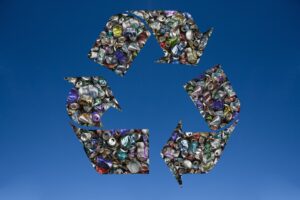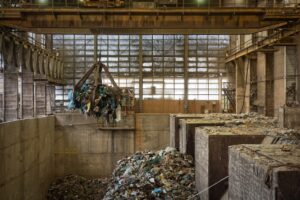Ecosystem destruction refers to the significant and often irreversible damage caused to natural habitats and the species that depend on them. This destruction is driven primarily by human activities such as deforestation, pollution, unsustainable agriculture, and climate change. The consequences reach far beyond the natural world, impacting biodiversity, community health, economies, and the stability of life on Earth.
To address this challenge, institutions — from governments to NGOs to businesses — play a crucial role in setting policies, developing solutions, and driving awareness. By understanding the causes and consequences of ecosystem destruction, society can better chart a path toward sustainable living.
Causes of Ecosystem Destruction
The drivers of ecosystem destruction are largely human-made and interconnected.
- Deforestation: The clearing of forests for agriculture, logging, and urbanization destroys habitats, reduces biodiversity, and disrupts the water cycle.
- Pollution: Industrial waste, agricultural runoff, and plastic pollution degrade soils, waterways, and marine ecosystems, creating toxic environments for species.
- Overfishing and hunting: Extracting species faster than they can reproduce leads to population collapse and destabilized food chains.
- Climate change: Rising global temperatures, shifting weather patterns, and sea-level rise alter ecosystems at a scale and pace many species cannot adapt to.
- Industrialization and urban expansion: Infrastructure development fragments habitats and increases human-wildlife conflict.
Each of these pressures not only diminishes biodiversity but also weakens the very systems humans rely on for survival.
Consequences for Biodiversity and Human Society
Ecosystem destruction has cascading effects that ripple through nature and human communities.
- Loss of biodiversity: Species are pushed toward extinction as habitats shrink or vanish. This disrupts the balance of ecosystems, leaving them less resilient to shocks like disease or natural disasters.
- Ecosystem services under threat: Healthy ecosystems provide clean air, fresh water, fertile soil, pollination, and carbon storage. When ecosystems collapse, these services decline, threatening food security and public health.
- Human vulnerability: Destroyed ecosystems leave communities more exposed to flooding, landslides, and extreme weather events. For example, mangroves protect coastlines from storm surges — when removed, coastal communities become far more vulnerable.
- Loss of medicinal resources: Many modern medicines originate from plants and animals. As biodiversity declines, so does the potential for new life-saving treatments.
- Economic disruption: Communities that depend on forests, fisheries, or agriculture suffer when these resources are depleted. The global economy also feels the effects through supply chain disruptions and reduced productivity.
The Role of Institutions in Tackling Ecosystem Destruction
Institutions are at the forefront of the fight to slow and reverse ecosystem destruction. Their actions — or inaction — determine how effectively humanity can respond to this crisis.
- Government policies and regulations: Enforcing conservation laws, limiting deforestation, regulating pollution, and setting aside protected areas are vital government functions.
- Non-governmental organizations (NGOs): NGOs raise awareness, advocate for policy change, and implement conservation projects in collaboration with local communities.
- Businesses and corporations: Companies are increasingly being held accountable for their environmental footprints. Adopting sustainable supply chains, reducing emissions, and supporting ecosystem restoration are ways they can play a positive role.
- Research and education institutions: Universities and scientific organizations provide critical data, strategies, and technologies for conservation. They also help educate the next generation of leaders on sustainability.
- Community-based initiatives: Local stewardship is essential. When communities are empowered with the knowledge and resources to protect their ecosystems, conservation efforts are more effective and enduring.
By working together, these institutions can create frameworks for large-scale change, combining policy, funding, and innovation with grassroots action.
Strategies for Mitigating and Reversing Ecosystem Destruction
While much damage has already been done, there are proven strategies to slow and even reverse ecosystem destruction.
- Protected areas: National parks, marine reserves, and wildlife sanctuaries shield habitats from exploitation and allow ecosystems to regenerate.
- Sustainable land management: Practices such as agroforestry, regenerative farming, and controlled grazing protect soil, conserve water, and preserve biodiversity.
- Pollution control: Stricter waste management laws, better recycling systems, and reduced use of harmful chemicals help safeguard ecosystems.
- Restoration efforts: Reforestation, wetland restoration, and coral reef rehabilitation projects help revive degraded ecosystems.
- Circular economy practices: By reducing waste, reusing materials, and promoting recycling, societies can lower the strain on ecosystems and reduce destructive resource extraction.
- Global collaboration: International agreements like the Paris Climate Accord and the Convention on Biological Diversity provide frameworks for collective action.
The Urgency of Action
Ecosystem destruction is not a distant threat — it is happening now. From disappearing rainforests to collapsing coral reefs, the signs are clear. Urgent action is needed from every sector of society:
- Governments must enforce strong environmental protections.
- Businesses must transition to sustainable practices.
- Communities must demand accountability and participate in conservation.
- Individuals must reduce their ecological footprints by making informed choices in diet, consumption, and energy use.
The survival of ecosystems is deeply intertwined with the survival of humanity. Protecting them is not only an environmental necessity but also a social and economic one.
Final Thoughts
Ecosystem destruction represents one of the greatest environmental crises of our time. Driven largely by human activity, it threatens biodiversity, ecosystem services, and human livelihoods. Yet it is also a challenge we have the tools to confront.
By prioritizing ecosystem protection, enforcing sustainable practices, and fostering collaboration across governments, businesses, NGOs, and communities, we can slow the pace of destruction and begin the work of restoration. Every individual action — from reducing waste to supporting eco-conscious policies — contributes to a collective effort.
Protecting ecosystems is ultimately about protecting ourselves and ensuring that future generations inherit a planet capable of sustaining life.









Reader Interactions